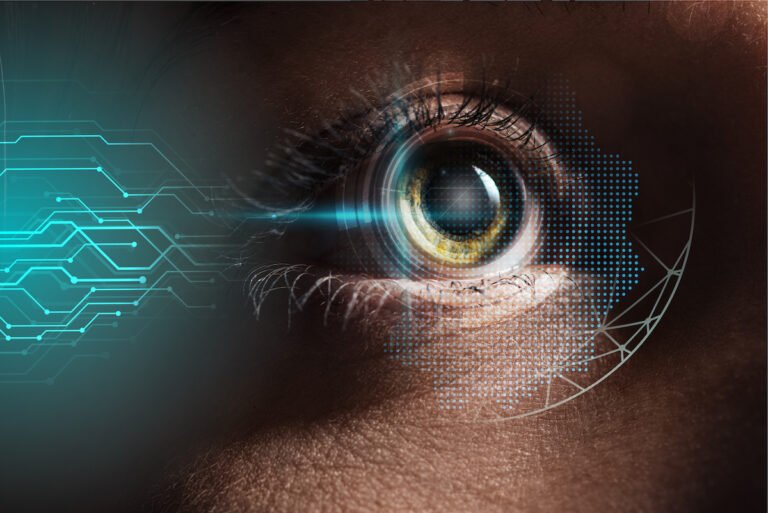Researchers from UC Santa Barbara have made a significant breakthrough: WiFi signals that can read through walls, presenting profound implications for the future of wireless communication and security.
The researchers, working in Professor Yasamin Mostofi’s lab, have unveiled a revolutionary method that allows WiFi signals to penetrate walls, tracing intricate details of objects behind them. This innovation, rooted in the Geometrical Theory of Diffraction and the corresponding Keller cones, not only showcases the untapped potential of wireless signals but also opens a plethora of applications, from advanced surveillance to healthcare diagnostics.
The research focuses on the interaction of edges with incoming waves using the Geometrical Theory of Diffraction (GTD). The proposed method, named “Wiffract,” images the edges of still objects by exploiting the GTD and utilizing the corresponding Keller cones.
Building upon the foundational work of the Mostofi Lab, which has been at the forefront of sensing technology using everyday radio frequency signals like WiFi since 2009, Wiffract expands the horizons of applications. These applications range from analyzing crowds and identifying individuals to advancements in smart health.
Elaborating on the technical intricacies, Mostofi told UC Santa Barbara’s The Current, “When a wave encounters an edge, it gives rise to what we term as a ‘Keller cone,’ based on Keller’s Geometrical Theory of Diffraction (GTD). The orientation of the edge influences the resulting footprint of the cone on a receiver grid. Leveraging these footprints, we’ve crafted a mathematical model that deciphers these signatures, allowing us to determine the edge’s orientation and subsequently produce a detailed edge map of the entire scene.”
The team put together a YouTube video explaining the science and their process, but the overall idea stems from the fact that WiFi signals essentially bounce around and off objects. Using a receiver grid allows for that movement along the edges of the object to be traced.
This approach has enabled WiFi to read the English alphabet through walls, showcasing the intricate details of letters. However, the team has indicated that the technology could be used to create maps of interior locations, trace and monitor human body movements, monitor public traffic, and a whole host of other applications.
“Depending on the edge orientation, the cone then leaves different footprints (i.e., conic sections) on a given receiver grid. We then develop a mathematical framework that uses these conic footprints as signatures to infer the orientation of the edges, thus creating an edge map of the scene,” Mostofi explained.
This isn’t the first time WiFi has been used to “see” through walls. Last year, researchers at the University of Waterloo in Canada developed a drone named “Wi-Peep.” This drone utilized a WiFi’s connection protocol to pinpoint the location of devices such as mobile phones, smartwatches, laptops, and tablets within a room, subsequently creating a layout map. The drone exploits a connectivity feature known as “polite WiFi,” where even password-protected devices respond to contact attempts if within range. By sending multiple messages to a device and measuring the response time, the drone can accurately determine the location of each device within a meter’s precision. Dr. Ali Abedi, an adjunct professor of computer science at Waterloo, emphasized the potential security applications and risks of such technology, noting that it could be used to track movements within buildings or identify smart devices in a home.
While Wi-Peep uses a totally different process and technology to “see” through walls, the overall implications to security and privacy are vast. WiFi signals are everywhere, and whether its Wiffract or Wi-Peep, public awareness and good policies are essential.
Law enforcement agencies could potentially use this technology to monitor criminal activities without physically breaching a location, and hospitals could monitor patients without wearable medical devices, but it also raises concerns about unwarranted surveillance and personal privacy. The technology’s ability to identify individuals based on their silhouette or even their walking pattern, as suggested by its application in person identification, is both impressive and concerning.
In the wrong hands, it could be used to track individuals without their knowledge, leading to potential stalking or identity theft scenarios. Furthermore, if integrated with existing data collection methods, it could provide a more comprehensive profile of an individual, leading to heightened data privacy concerns.
MJ Banias is a journalist and podcaster who covers security and technology. He is the host of The Debrief Weekly Report and Cloak & Dagger | An OSINT Podcast. Follow him on Twitter @mjbanias.

